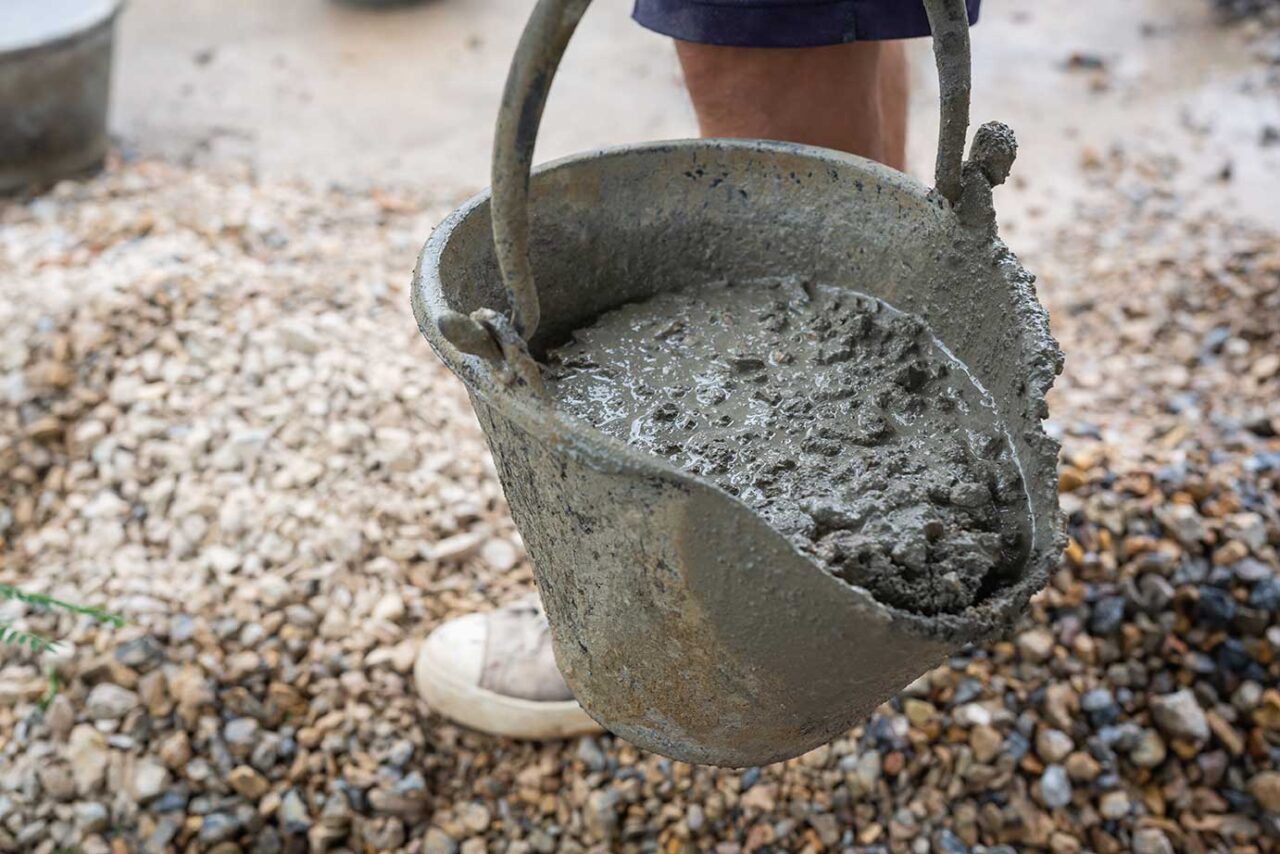Concrete Curing and Environmental Impact:
Curing Process: Concrete is made from natural products that create a chemical reaction by curing. As the curing process gradually decelerates, it can persist for over a year under optimal conditions. Exposure to elements can alter curing, affecting concrete’s shade and appearance.
Paver Moisture: The pavers appear damp when they come off the pallet. During dry conditions, it’s crucial to install pavers, enabling them to expel curing moisture; once fully dry, the curing process stabilizes.
Ageing and Weathering: Concrete will age and weather over time and, therefore, change depending on the environment it is exposed to (similar to timber and most other construction materials).
Paver Installation Guidelines:
Here are the guidelines for paver installation:
Recommended Base: The best and recommended permanent material to lay pavers on is a fully supported sand-and-cement mortar mix of approximately five parts sand to 1 part cement (to lock pavers in) on top of a compacted base course or a concrete pad. It enables adjustments for paving thickness variations and facilitates achieving a level, solid surface with ease.
Mortar Bed: We recommend a full bed of mortar under the paver to provide extra support and strength for the paver. A more consistent base not only enhances stability but also mitigates the influence of underground elements, like water, on the paver’s surface color. Ensure you clean and dry the underside of the paver, removing any debris or scaling as needed.
Gaps Between Pavers: We recommend a 4-10mm gap between the pavers at the bottom to give a 9-15 mm grouting gap on the surface and allow for variations in paver size. For different textured pavers, consult Urban Paving to ensure sufficient gaps for varying nominal sizes.
Drainage: Ensure the pavers are laid so water can drain off. A free-draining base prevents pavers or mortar from absorbing moisture, reducing efflorescence, shade variation, and mottling.
Objects on Pavers: Do not leave objects or tools on new pavers for an extended time (overnight), as they may leave a shadow.
Storage: When you get your pavers home, store uncovered pallets of pavers in a dry place and protect them from the elements to avoid water marks. If you need to shift the pavers from the pallet, stack them exactly as they were on the pallet. Avoid diamond stacking, which can cause shadows on the paver surface, and do not use flat stacking.
Mixing Pallets: When installing from multiple pallets, we recommend mixing them as they are laid to allow for any variation in color and natural appearance.
Efflorescence: Efflorescence is the phenomenon of natural salts migrating to the surface of the concrete as water moves in and out, leaving a whitish, powder-like discoloration on the surface of your pavers. Efflorescence will settle and cease over time. Often, the better the quality and strength of concrete, the more cement – and often the more efflorescence.
Stains: In much the same way as wood, concrete is a porous product and can absorb stains. Hence, it’s prudent to swiftly eliminate any substances that might induce stains on the pavers.
Size Variations: Our concrete pavers have a 2–3-degree taper on all four sides. The base of the paver is the larger dimension, narrowing to the top. This is normal for handmade products. Conversely, using two 300mm pavers will consume more linear space than employing a single 600mm paver. Please check with our staff to ensure you get the correct number of pavers for your job.
Natural Variation: Concrete pavers are made from natural products. The natural processes of concrete and environmental factors will affect the pavers’ appearance beyond our control. Urban Paving does not assure exact shade consistency. It absolves itself of responsibility for variations resulting from natural events or inadequate care and installation practices.
Enhancing your living space has never been easier with FloorPup! Explore our wide selection of hardwood flooring, get expert floor care and maintenance tips, and find inspiration in our gallery. Our professional floor fitters, skilled driveway pavers, and reliable carpet repair services ensure top-quality results. Learn more about our commitment to quality on our about us page. Visit FloorPup and transform your home today!
FAQS
What is the maintenance for pavers?
It usually includes routine activities like sweeping to prevent debris accumulation, periodic pressure washing to remove stains and dirt, and managing weed growth in the joints. Periodically, it’s advisable to reseal your pavers, safeguarding them against damage and enriching their aesthetic charm. Through regular upkeep, your pavers will endure and retain their allure.
Installing pavers involves several key steps. First, you prepare the area by excavating and ensuring proper drainage. Next, you lay a stable base material like crushed stone and compact it thoroughly. Next, proceed to arrange the pavers in your desired pattern, ensuring to leave small gaps between them. After placing the pavers, compact them again and fill the gaps with jointing sand to secure them in position. If desired, you can apply a sealant for added durability and aesthetics. This process results in a durable and visually appealing outdoor surface for various applications.
What to do after installing pavers?
After installation, take these steps: Fill gaps with jointing sand or mortar to stabilize and prevent weed growth, compact the pavers for stability, and consider applying a protective sealer. Routine cleaning and periodic resealing will help maintain their durability and appearance over time.
Are pavers easy to maintain?
Certainly! Pavers are typically easy to maintain. Periodic cleaning to remove dirt and debris is usually all that’s needed. Types of pavers may benefit from regular resealing to enhance durability and prevent weed growth in the joints. On the whole, pavers offer a low-maintenance solution for driveways, patios, and walkways.


